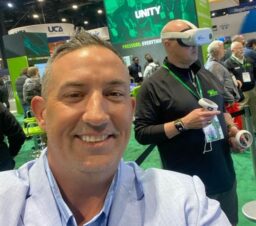Atlanta — Finding the balance between environmental health and energy efficiency in the pursuit of low energy buildings is examined in a paper at the upcoming ASHRAE IAQ 2013, setting the tone for discussion for the entire conference.
“Neglecting indoor air quality while pursuing other goals can result in building environments that negatively impact the health, comfort and productivity of occupants and therefore defeat the overall goal of building design, including reduced costs,” Kevin Teichman, a senior science advisor at the U.S. Environment Protection Agency, said. “While building design is key to achieving a high-performing building, it is critically important to follow these good intentions through construction, commissioning, operation and maintenance. Only in this way will high-performing buildings actually perform as designed.”
Teichman’s papers are among 80 conference papers and extended abstracts being presented at IAQ 2013, Environmental Health in Low-Energy Buildings, which takes place Oct. 15-18, 2013, in Vancouver, British Columbia, Canada. This conference is the 17th in the ASHRAE IAQ conference series and is co-organized by ISIAQ.
Registration is now open for the conference. To register and for complete conference information, visit www.ASHRAE.org/IAQ2013. An early bird rate expires Aug. 31 but advanced registration is open through Sept. 30, 2013.
Teichman’s paper, “Indoor Air Quality in High-Performing Building Case Studies: A Wealth of Intent, A Dearth of Data,” examines the role of indoor air quality in high performing buildings, focusing on case studies in ASHRAE’s High Performing Buildings magazine. The paper was co-authored by Andrew Persily and conference co-chair Steve Emmerich, mechanical engineers at the National Institute of Standards and Technology.
A panel discussion on the topic also is planned.
“While progress has been made in achieving sustainable, high-performance buildings, it is noteworthy that many discussions of green, high-performing and certainly net-zero energy buildings tend to focus on energy consumption,” Teichman said. “Energy is critically important, but is only one aspect of performance and should not be pursued to the neglect of the others.”
The conference seeks to describe the current state-of-understanding of the relationship of IEQ in high-performance buildings.
“There are not a lot of data on IEQ in high performance buildings, but this conference will bring the collective knowledge of the industry together to set a benchmark, if you will, on where we are and how we should move forward,” Hal Levin, conference co-chair, said. “It will be important in identifying critical gaps in our knowledge and potential priorities for future ASHRAE research, standards and guidelines.”
The state of knowledge will be summarized in written “topic overviews” to be included in the Conference proceedings publication. These overviews may include comments on papers in the sessions; provide supplemental information; summarize the state of the art; include suggestions for high-priority research, as well as identify areas that are well researched; or include recommendations to ASHRAE about implementation of energy conservation and IEQ design activities, Levin said.
The Conference features papers and presentations in nine tracks, which include
• Environmental Health in Low-Energy Buildings
• Moisture and Health
• Sources and Chemistry
• Indoor Environmental Quality Factor Interactions
• Residential Buildings
• Commercial and Institutional Buildings
• Air Cleaning and Filtration
• Microorganisms and Infection
• Tools (models, measurements and more)
Plenary Lectures are given by four distinguished international authorities:
• William Bahnfleth, Ph.D., P.E., Fellow ASHRAE, ASME Fellow, Pennsylvania State University, 2013–14 ASHRAE president, “Are We Putting Enough Energy into Making Buildings Healthy?”
• Richard Corsi, Ph.D., P.E. University of Texas, Austin, Indoor Air 2011 president, “Building Energy and Reactivity”
• Mark J. Mendell, Ph.D., Lawrence Berkeley National Laboratory and California Department of Public Health, “Do We Know Much about Low Energy Buildings and Health?”
• Pawel Wargocki, Ph.D., Danish Technical University, ISIAQ president, “What Can Europe Teach Us?”




Join the conversation: